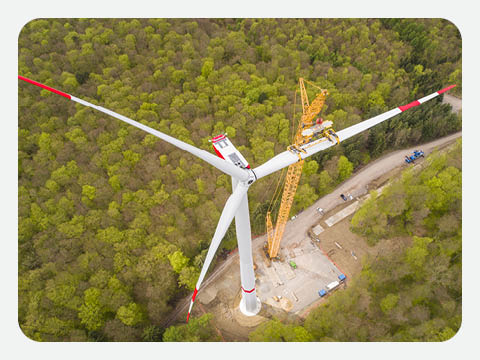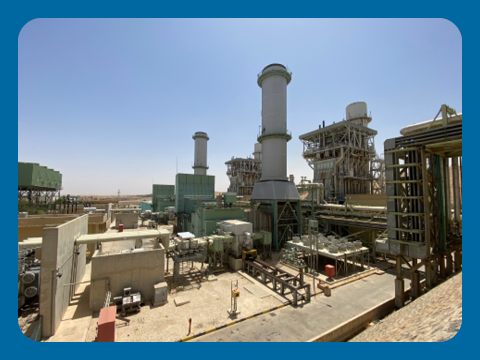Read as a PDF.
When it’s time to renew a property insurance policy, insurers and reinsurers may or may not require a risk survey of the property depending on a number of factors, including the time since the last survey, material changes to the property and claim history, among other factors that are typically considered by underwriters at the time of renewal.
Renewal of complex Industrial Special Risk policies or even small manufacturing may prompt underwriters to require a risk survey. Some policyholders respond with trepidation to such requests, though a survey will often help operation and financial teams in their risk management duties if approached strategically and done by a qualified risk engineer who has knowledge and expertise in the type of industry and business.
In this article, we try to explain how (re)insurers, brokers and policy holders alike can utilise an risk survey effectively in the renewal process to enhance the risk profile, properly value the assets at the property and accurately estimate future losses. We will describe how the policy holder can apply the findings of a risk survey to improve their risk management activities and create, implement and track the best prevention and mitigation plans to protect their assets.
Given the frequent introduction of new risks and hazards, as well as the changing condition of property and clients’ business requirements, the renewal period can be a tricky time to navigate both for underwriters and insurance managers alike. While the conditions on the ground may vary from year to year, deciphering what these conditions mean in terms of the likelihood and severity of risk is a challenge.
Changes to Risk Profile
From year to year, conditions on site may change. This can include the natural degradation of equipment and machinery as a result of ageing, increasing the exposure to machinery breakdown, loss of power or water, and other conditions that may result in loss of business operations.
These changes can also, however, include improvements that clients would want to see reflected in their insurance coverage premium. Such changes can include new equipment, procurement of alternative suppliers to critical services (raw materials, water, electricity, etc.), and new management and control systems designed to reduce risk exposures.
When underwriting a policy, underwriters consider the conditions at the time of underwriting. Over time, these conditions change with buildings, facilities and equipment degrading with age. Equipment obsolescence can also affect the risk profile of a property. Introduction of new technologies can render some critical systems obsolete and inefficient in managing certain risks. New technologies can offer new opportunities to manage hazards better and therefore can affect the terms of the policy.
Changes to management can alter (improve or worsen) the application of effective risk management programmes. On the other hand, improvements to risk management policy or upgrades to buildings and equipment can lessen exposure to certain hazards. Even under the same management, changes in the business strategy can alter a company’s culture and understanding of risks involved.
Failure to account for these changes can affect the risk profile of a property and can lead to inaccurate application of terms and conditions in the event of a claim.
Because of the continuous changes (positive or negative) to a property’s condition, it is critical that insurers, reinsurers and property owners understand the existing and current conditions on the ground at every renewal period. That way, the correct policy terms would be considered and the renewed policy will ensure to cover all current hazards. The renewal period is the best time for new changes to be brought to light.
To obtain the best result, a comprehensive risk survey based on thorough knowledge of engineering principles and their specific application to the insured property can provide the best tool to understand the changing risk at the property.
Engineering Risk Surveys
The best way to understand the conditions on the ground is to carry out a survey of the site.
A good survey will look at the condition of the entire property, including buildings, facilities, and the site. . The surveyor should also assess the condition of all utilities and production machinery, as the continual operation of any property will depend on many different pieces of equipment including electrical systems, water systems, HVAC systems, fire detection and alarm systems, firefighting systems, and other industry-specific systems.
A walkthrough of the site will also reveal conditions that an underwriter and insurance manager should be aware of, including potential exposures such as ignition sources, fuels, processes, chemicals, waste, vehicles and others that could lead to significant losses, or leave a property vulnerable to exposures such as natural catastrophe, security risk, or machinery breakdown.
Along with identifying potential hazards on site, a risk survey will also include an assessment of the likelihood of such hazards occurring along with the severity of the impact. In addition to the conditions on the site, the management and control systems in place to reduce and mitigate the frequency and impact of exposures should also be considered.
Assessments can only be based on the information available to the risk analyst. This includes access to different parts of the plant as well as to critical personnel such as HSE officers, shift managers and the workers dealing most closely with the risk. Other information required includes updated and most recent management and control policies, such as maintenance schedules, emergency response plans, fire response plans, security policies, and training schedules. All policies should be evaluated in light of changes to the site and operational conditions which may have been identified during the new risk survey.
Altogether, a risk survey will identify old and new hazards, rate the risk (as calculated by the likelihood and impact of hazards) based on new conditions on site, and assess the most up-to-date management programmes in place to control these hazards. A properly conducted risk survey should:
- Assist to understand the condition and type of construction and current replacement value of the property
- Identify the location, surrounds and key risks pertaining to each site providing information about changes to infrastructure and neighbouring properties
- Identify unique hazards and control place to manage the risks arising from these hazards. Unique hazards have to be based on COPE (Construction, Occupancy, Protection and Exposure) characteristics of the property
- Provide a contemporaneous review of policies and procedures including health, safety and environmental considerations
- Demonstrate the level of risk management at the site.
Understand Emerging Risks
Today’s world is a world of uncertainty. While traditional risks such as fire, water escape and machinery breakdown remain a prominent source of concern across all industries, new exposures have presented themselves that were not even considered within the last decade.
During the past few years we have witnessed the effects of cyber threats, artificial intelligence (AI), climate change, automation, war and the pandemic, all of which have affected businesses around the world.
Examples of severe and complex losses arising from heavy rain over short periods of time affecting properties with old flood controls are abundant in many locations around the world including areas not known for heavy rain. Similarly, extreme temperatures and the associated risk of wild fires are now common occurrence in many areas historically known for their moderate and climate conditions. Sand storms in areas where desertification has been altering the weather patterns is causing damage to power plants and other critical infrastructure.
Identifying new hazards and assessing the likelihood and impact of these exposures to businesses remains critical. Unlike with other risks, where there is an established wealth of engineering experience that can be consulted, with established best practices for mitigation, a critical eye must be turned to the new challenges associated with these hazards.
Expert Analysis of Claims History
Although losses can be costly regardless of the type, incidents provide valuable opportunities to learn from mistakes and implement measures to prevent a similar incident from reoccurring—depending on the willingness of the client to take proactive measures in the right areas. Despite the best efforts of all parties involved, losses will continue to occur across all industries.
It is important to conduct an expert analysis of claims history to identify how an incident occurred and what contributing factors led to the severity of the loss. Following this analysis, a careful study of whether the conditions on site have been changed to prevent future incidents is necessary.
Measures that can be studied include the implementation of additional mitigation, increased maintenance schedules, additional firefighting protection measures or fire alarms, further training to staff and further audits.
Updated Risk Improvement Recommendations
Regardless of how well-prepared an organisation may be, there are always opportunities to improve the overall risk profile.
In the interest of decreasing the likelihood of risk, clients and insurers alike should seek out detailed analysis of shortcomings and potential areas of improvement, as well as areas where improvements can be made.
The successful implementation of such recommendations can significantly decrease the risk profile of a site. It is important, for the sake of understanding the conditions on the ground, that a follow-up inspection be carried out to identify the implementation of changes and the impact that such changes would have on future conditions.
EML/PML Update
Estimated Maximum Loss (EML) / Possible/Probable Maximum Loss (PML)scenarios are used by insurers to understand the extreme consequences of losses for a given risk. Changes on the ground between renewal periods will affect the EML and PML.
Carrying out new implementation review these changes to conditions and update insurers on the losses scenarios where necessary.
The Owner Perspective
Business applying robust and comprehensive risk management programmes tend to make constant improvements, both in terms of physical upgrades to properties (buildings and systems) as well as systems that support their risk improvements. A proper and comprehensive risk survey will support their attention to risk improvement by highlighting these upgrades and improvements as well as demonstrating risk maturity and a proactive approach to risk mitigation.
Demonstrating a business’ accurate identification of inherent risk and highlight proactive steps taken to manage these risk will likely attract competition amongst insurers to provide insurance quotations. This could lead to more competitive premiums and broader cover. Conversely, failure to produce an independent third party risk assessment could lead to insurers losing appetite to accept the transfer of risk.
By utilising an independent surveyor, the risk survey report goes directly to the Policyholder outlining all relevant information and providing all stakeholders with the same information at the same time. In addition, an independent list of recommendation allows the property owner to make modifications and improvements that can assist with their negotiations with insurers for better terms.
CEERISK’s Unique Risk Engineering Services
Our Network of Experts approach risk engineering from a loss perspective, giving us an insight into the many situations and circumstances under which losses can occur. There are many circumstances that can lead to losses, both directly and indirectly; we have investigated many instances where it issues like housekeeping or lack of training have played a critical role in the extent and severity of incidents.
Having investigated losses throughout the world in addition to conducting risk surveys across many sectors in different parts of the world, we have found as well that culture plays a key role in risk management. Through our understanding of local laws and regulation of many different countries, as well as customs with respect to how risk is managed. All of this must be considered when understanding the exposure to risk as well as advising on what are reasonable risk improvement recommendations.
















